The NVIDIA GeForce RTX 2070 Super & RTX 2060 Super Review: Smaller Numbers, Bigger Performance
by Ryan Smith on July 2, 2019 9:00 AM EST- Posted in
- GPUs
- GeForce
- NVIDIA
- Turing
- GeForce RTX
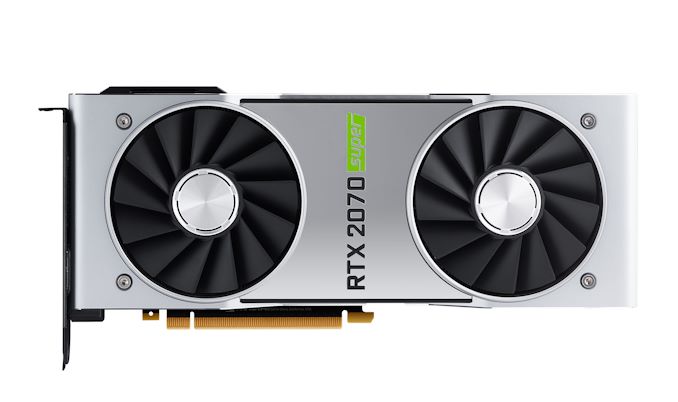
After a long quiet period in the realm of high-end GPUs, things are about to get exciting again. Last month AMD announced their new mid-to-high range of video cards, the Radeon RX 5700 series, based on their new Navi GPU architecture and associated 7nm Navi 10 GPU. AMD has already revealed essentially everything about these cards in advance, and that launch is fittingly coming up on Sunday, July 7th (7/7).
But first, NVIDIA would like to have a word.
Ever since Computex, NVIDIA has been teasing a “Super” announcement of their own. And this morning, that announcement is finally coming to fruition. NVIDIA is launching a mid-generation kicker for their mid-to-high-end video card lineup in the form of their GeForce RTX 20 series Super cards. Based on the same family of Turing GPUs as the original GeForce RTX 20 series cards, these new Super cards – all suffixed Super, appropriately enough – come with new configurations and new clockspeeds. They are, essentially, NVIDIA’s 2019 card family for the $399+ video card market.
When they are released on July 9th, the GeForce RTX 20 series Super cards are going to be sharing store shelves with the rest of the GeForce RTX 20 series cards. Some cards like the RTX 2080 and RTX 2070 are set to go away, while other cards like the RTX 2080 Ti and RTX 2060 will remain on the market as-is. In practice, it’s probably best to think of the new cards as NVIDIA executing as either a price cut or a spec bump – depending on if you see the glass as half-empty or half-full – all without meaningfully changing their price tiers.
| NVIDIA GeForce RTX 20 Series Lineup | |||
| Card | Price | ||
| GeForce RTX 2080 Ti | MSRP: $999 Street Price: $1249 |
||
| GeForce RTX 2080 Super | MSRP: $699 | ||
| GeForce RTX 2080 | EOL ($699) | ||
| GeForce RTX 2070 Super | MSRP: $499 | ||
| GeForce RTX 2070 | EOL ($499) | ||
| GeForce RTX 2060 Super | MSRP: $399 | ||
| GeForce RTX 2060 | MSRP & Street Price: $349 | ||
In terms of performance, the RTX 2060 and RTX 2070 Super cards aren’t going to bring anything new to the table. In fact if we’re being blunt, the RTX 2070 Super is basically a slightly slower RTX 2080, and the RTX 2060 Super may as well be the RTX 2070. So instead, what has changed is the price that these performance levels are available at, and ultimately the performance-per-dollar ratios in parts of NVIDIA’s lineup. The performance of NVIDIA’s former $699 and $499 cards will now be available for $499 and $399, respectively. This leaves the vanilla RTX 2060 to hold the line at $349, and the upcoming RTX 2080 Super to fill the $699 spot. Which means if you’re in the $400-$700 market for video cards, your options are about to get noticeably faster.
The timing on all of this is quite interesting, of course. NVIDIA is launching these cards just in time to match AMD’s own Radeon RX 5700 launch. And while NVIDIA’s official line is that this launch is driven by economies of scale and slow card sales due to poor pricing – both valid points that I will grant NVIDIA – to call a spade a spade this is clearly NVIDIA looking to counter AMD’s launch. AMD showed their cards early (literally and figuratively), so NVIDIA and the rest of the world were able to see what kind of performance AMD is expecting to get and at what prices those cards will roll out.
Ultimately by launching faster cards at $400 and $500 now, NVIDIA is looking to protect their massive market share while moving the goalposts on AMD (ed: or maybe just removing the football entirely). After today, the next move is AMD’s, but as we’ll see in our benchmarks of the new RTX 20 Super cards, they’ll need to react if they want to maintain their momentum. In the meantime, I think it’s fair to say that everyone is just happy to see pricing come down on NVIDIA’s capable but overpriced Turing video cards.
Launching July 9th: GeForce RTX 2070 Super & GeForce RTX 2060 Super
Getting into the meat of today’s review, let’s take a quick look at the specs for NVIDIA’s new cards, the GeForce RTX 2070 Super and GeForce RTX 2060 Super. As I mentioned before, these are by and large NVIDIA’s 2080 and 2070 vanilla cards slightly tweaked and given lower model numbers. This allows NVIDIA to crank up their performance without actually cutting prices at their major price points. Neither card is exactly identical to the 2018 card its borrowing so heavily from – there are small specification differences for binning and product differentiation reasons – but even in the case of the RTX 2070, we’re talking about just a 4% performance deficit versus the RTX 2080.
| NVIDIA GeForce Specification Comparison | |||||||
| RTX 2080 | RTX 2070 Super | RTX 2070 | RTX 2060 Super | RTX 2060 | |||
| CUDA Cores | 2944 | 2560 | 2304 | 2176 | 1920 | ||
| ROPs | 64 | 64 | 64 | 64 | 48 | ||
| Core Clock | 1515MHz | 1605MHz | 1410MHz | 1470MHz | 1365MHz | ||
| Boost Clock | 1710MHz | 1770MHz | 1620MHz | 1650MHz | 1680MHz | ||
| Memory Clock | 14Gbps GDDR6 | 14Gbps GDDR6 | 14Gbps GDDR6 | 14Gbps GDDR6 | 14Gbps GDDR6 | ||
| Memory Bus Width | 256-bit | 256-bit | 256-bit | 256-bit | 192-bit | ||
| VRAM | 8GB | 8GB | 8GB | 8GB | 6GB | ||
| Single Precision Perf. | 10.1 TFLOPS | 9.1 TFLOPS | 7.5 TFLOPS | 7.2 TFLOPS | 6.5 TFLOPS | ||
| TDP | 215W | 215W | 175W | 175W | 160W | ||
| GPU | TU104 | TU104 | TU106 | TU106 | TU106 | ||
| Transistor Count | 13.6B | 13.6B | 10.8B | 10.8B | 10.8B | ||
| Architecture | Turing | Turing | Turing | Turing | Turing | ||
| Manufacturing Process | TSMC 12nm "FFN" | TSMC 12nm "FFN" | TSMC 12nm "FFN" | TSMC 12nm "FFN" | TSMC 12nm "FFN" | ||
| Launch Date | 09/20/2018 | 07/09/2019 | 10/17/2018 | 07/09/2019 | 1/15/2019 | ||
| Launch Price | $699 | $499 | $499 | $399 | $349 | ||
We’ll start off with the RTX 2070 Super. This card makes the biggest leap among the new RTX 20 series Super card lineup, as its predecessor, the RTX 2070 vanilla, was already using a fully-enabled TU106 GPU. As a result, in order to crank up the performance, NVIDIA has made the jump to the TU104 GPU, which previously was only used for the RTX 2080. Juxtaposed against the RTX 2080 (and forthcoming RTX 2080 Super), this card is a more “traditional” 70 card, in that it’s now based on a cut-down version of the same GPU in the 80 card.
All told, NVIDIA has disabled 8 of TU104’s 48 SMs here, leaving a card with 40 SMs, or 2560 Turing CUDA cores. To make up for this, NVIDIA has cranked up clockspeeds a bit; RTX 2070 Super has higher base and boost clocks than the RTX 2080, which helps it to narrow what gap there is to start with. If you look at pure SM throughput, the RTX 2070 should deliver around 90% of RTX 2080’s compute/texturing/geometry performance; but because its 64 ROPs are fully-enabled and clocked higher than RTX 2080, in practice it trails the RTX 2080 by just 4% at 2560x1440.
Meanwhile on the memory side of matters, things remain unchanged. Both TU104 and TU106 sport 256-bit memory busses, and all of the 2070 cards are fully populating this with 8GB of GDDR6 clocked at 14Gbps. This means that the RTX 2070 Super doesn’t have any more memory bandwidth than its vanilla counterpart, but then it also means it has just as much memory bandwidth as the RTX 2080.
The drawback here is that with RTX 2080-like performance comes RTX 2080-like power consumption. The TDP of the card is 215 Watts, exactly the same as the RTX 2080 and 40W higher than the RTX 2070 vanilla. On paper, NVIDIA’s energy efficiency actually takes a small hit here because of this – it’s less than RTX 2080 performance for the same TDP – which is in part a consequence of using higher clockspeeds. But with the cards’ performance being so close, in practice it’s a negligible shift.
The target market for the new RTX 2070 Super then is largely the same as the RTX 2080 it borrows so liberally from. The RTX 2070 isn’t quite enough to drive 4K resolution gaming – that’s a job for the RTX 2080 Ti – but it is extremely capable for 2560x1440p. Alternatively, these days the 2080/2070S does pretty well in ray traced games at 1080p, though it still varies some from game to game.
Meanwhile, coming in below the RTX 2070 Super at the new price tier of $399 is the RTX 2060 Super. This is a card that is for all intents and purposes a RTX 2070 at a lower price; it uses an ever-so-slightly cut-down version of TU106 to deliver performance that is within 1% of the RTX 2070. All told, NVIDIA has done something fairly similar here as with the RTX 2070 Super, disabling some SMs and cranking up the clockspeeds to compensate. The end result is a card with 34 of 36 SMs enabled, and some extra clocks to help minimize the gap. By the numbers it delivers 96% of RTX 2070’s shading/texturing/geometry performance, but 102% of its ROP/rasterization performance. Or to frame things relative to the RTX 2060, it’s about 14% faster thanks to its combination of SM and clockspeed advantage.
Equally (if perhaps not more) important here however is the memory configuration. Whereas the RTX 2060 vanilla comes with an awkward 6GB of GDDR6 – leaving it just a bit short on capacity and bandwidth – the RTX 2060 Super gets a full 8GB. This means that it can deliver just as much VRAM capacity and bandwidth as the 2070 and 2080 cards – 33% more of each than the vanilla 2060 – which not only helps it a lot in performance, but also in future-proofing. NVIDIA for its part isn’t retiring the vanilla RTX 2060, but for just $50 over that card, there’s a very compelling argument to ignore the hobbled 6GB card entirely.
But, like the RTX 2070 Super, the performance bump comes with a power consumption bump. If the RTX 2070 Super is a pocket RTX 2080, then the RTX 2060 Super is a pocket RTX 2070. This means the TDP has gone up from 160W on the 2060 vanilla to 175W on the 2060 Super – the smaller jump being since both cards use the same TU106 GPU – as these are the same Turing GPUs and NVIDIA’s energy efficiency hasn’t improved at all here.
Within the NVIDIA stack, the RTX 2060 Super is basically the lowest tier of 2560x1440p card. This is a notion that hasn’t quite existed before, but the RTX 2060 Super is so powerful that 1080p almost leaves the card underutilized in a lot of today’s games. Consequently this may very well make it the most interesting card launching today, as while it’s essentially just a 2070 for $100 less, at $399 it’s moving into that mid-range sweet spot that more fondly remembered cards like the GTX 970 and GTX 1070 occupied.
Launching July 23rd: GeForce RTX 2080 Super
Very briefly, we also have the matter of NVIDIA’s final RTX 20 series Super card to touch upon: the GeForce RTX 2080 Super.
Just like the RTX 2060 and RTX 2070, the RTX 2080 Super is getting a mid-generation kicker. However this card won’t be launching for a few more weeks – specifically, July 23rd – and isn’t part of today’s review. In fact it was only yesterday that NVIDIA even released the card’s specifications. So we’ll deal with this card in due time, but for now, it’s going to be the replacement for the regular RTX 2080 at the $699 price point.
| NVIDIA GeForce Specification Comparison | ||||||
| RTX 2080 Super | RTX 2080 | RTX 2070 Super | RTX 2070 | |||
| CUDA Cores | 3072 | 2944 | 2560 | 2304 | ||
| ROPs | 64 | 64 | 64 | 64 | ||
| Core Clock | 1650MHz | 1515MHz | 1605MHz | 1410MHz | ||
| Boost Clock | 1815MHz | 1710MHz | 1770MHz | 1620MHz | ||
| Memory Clock | 15.5Gbps GDDR6 | 14Gbps GDDR6 | 14Gbps GDDR6 | 14Gbps GDDR6 | ||
| Memory Bus Width | 256-bit | 256-bit | 256-bit | 256-bit | ||
| VRAM | 8GB | 8GB | 8GB | 8GB | ||
| Single Precision Perf. | 11.2 TFLOPS | 10.1 TFLOPS | 9.1 TFLOPS | 7.5 TFLOPS | ||
| TDP | 250W | 215W | 215W | 175W | ||
| GPU | TU104 | TU104 | TU104 | TU106 | ||
| Transistor Count | 13.6B | 13.6B | 13.6B | 10.8B | ||
| Architecture | Turing | Turing | Turing | Turing | ||
| Manufacturing Process | TSMC 12nm "FFN" | TSMC 12nm "FFN" | TSMC 12nm "FFN" | TSMC 12nm "FFN" | ||
| Launch Date | 07/23/2019 | 09/20/2018 | 07/09/2019 | 10/17/2018 | ||
| Launch Price | $699 | $699 | $499 | $499 | ||
Unlike the other two RTX 20 series Super cards, the RTX 2080 Super is getting a slightly different treatment. The original RTX 2080 already used a mostly-enabled TU104 GPU, so while NVIDIA is shifting to a fully-enabled GPU – enabling another 2 SMs – that alone won’t do much for the card’s performance. Instead is going to rely on a mix of clockspeed bumps for both the GPU and the memory.
On the GPU clockspeed front, the card will ship with a boost clock of 1815MHz, the highest of all the RTX 20 series cards. Meanwhile, in a first for any Turing card, the memory clockspeed is being increased from 14Gbps to 15.5Gbps, an 11% increase to better feed the fully-enabled TU104 GPU. 16Gbps GDDR6 chips have always been in the memory roadmaps, so this is where NVIDIA will first introduce them.
The tradeoff however, is that like the other Super cards, TDPs are going up. The RTX 2080 Super will be a 250 Watt card, 35W higher than the RTX 2080 and matching the TDP of the top-tier RTX 2080 Ti. As I simply can’t imagine a TU104 card matching RTX 2080 Ti, it would seem that NVIDIA’s energy efficiency is going to take a hit here. NVIDIA’s high clocks here mean that they have to really open up on power delivery in order to allow the TU104 GPU to sustain over 1800MHz, which comes at a fairly expensive point on the voltage/frequency curve.
We’ll know more for sure here in a few weeks, so stay tuned for that.
Product Positioning, Availability & the Competition
Coming full circle here, let’s quickly touch on pricing, positioning, and availability for the new RTX cards.
While today is the review embargo for the RTX 2070 Super and RTX 2060 Super, it’s not a hard launch. The cards won’t go on sale until Tuesday, July 9th, 2 days after AMD’s cards go on sale. As a result the launch does walk a fine line to the bad old days of paper launches, but with AMD’s launch awkwardly falling on a Sunday to begin with, in practice it’s not enough of a difference to matter. The launch of NVIDIA’s new cards is, intentionally or not, invariably intertwined with the launch of the AMD Radeon RX 5700 series.
In terms of launch cards then, NVIDIA and its partners are going to hit the ground running here with everything from reference cards to fully custom cards. These are the same TU104/TU106 GPUs using the same memory, so board partners can quickly tap their existing 2080/2070 designs to bring new cards to market. Similarly, card volume shouldn’t be a big issue, though with demand somewhat front-loaded, there’s still the potential for sell-outs.
NVIDIA for its part will once again be releasing their own reference cards. However in a change from last year’s factory overclocked Founders Edition cards, NVIDIA will not be overclocking their cards or charging a premium for them. Their reference cards are still going to be sold under the Founders Edition branding, however they should perform identically to any other reference-clocked cards. And fittingly, they won’t carry a price premium. Meanwhile, as is usually the case, the cards will be sold directly by NVIDIA.
As an added kicker, NVIDIA is also launching with a video game bundle right out of the gate. The new RTX 20 series Super cards will be getting a two game bundle that consists of Wolfenstein: Youngblood and Remedy’s upcoming Control. NVIDIA for its part has been avoiding game bundles at launch for its high-end cards for most of the past few years, so it’s noteworthy to see them included here. As I mentioned early on, NVIDIA is looking to increase the value of their cards without actually cutting prices, so this is another way to achieve that.
In the meantime, NVIDIA’s RTX 2080 and RTX 2070 cards will be heading off to retirement. Officially, NVIDIA isn’t saying how retailers will be getting rid of any remaining inventory, but similar to full-fledged video card series launches, I would expect to see some sales here, especially as the new cards significantly undercut these outgoing cards.
The competition for the new Super cards will of course be AMD’s Radeon RX 5700 series. There are no perfect 1-to-1 comparisons here since (at current prices, at least) AMD and NVIDIA are selling at slightly different prices. But the RTX 2060 Super is clearly positioned to squeeze both the RX 5700 and RX 5700 XT, while the RTX 2070 Super would be NVIDIA’s trump card over the RX 5700 XT. To what degree of course remains to be seen in a few days when AMD’s new cards launch.
All told, NVIDIA’s plan is to have a technological and power efficiency advantage over AMD’s cards, and if AMD’s performance estimates are accurate, then to meet or beat them on value as well. In particular, AMD is not bringing any new graphics features to the table that can match Turing’s more advanced features such as ray tracing and variable rate shading, so expect to see NVIDIA continue to wield that against AMD.
| July 2019 GPU Pricing Comparison | |||||
| AMD | Price | NVIDIA | |||
| $1249 | GeForce RTX 2080 Ti | ||||
| Radeon VII | $699 | GeForce RTX 2080 Super | |||
| $499 | GeForce RTX 2070 Super | ||||
| Radeon RX 5700 XT | $449 | ||||
| $399 | GeForce RTX 2060 Super | ||||
| Radeon RX 5700 | $379 | ||||
| $349 | GeForce RTX 2060 | ||||


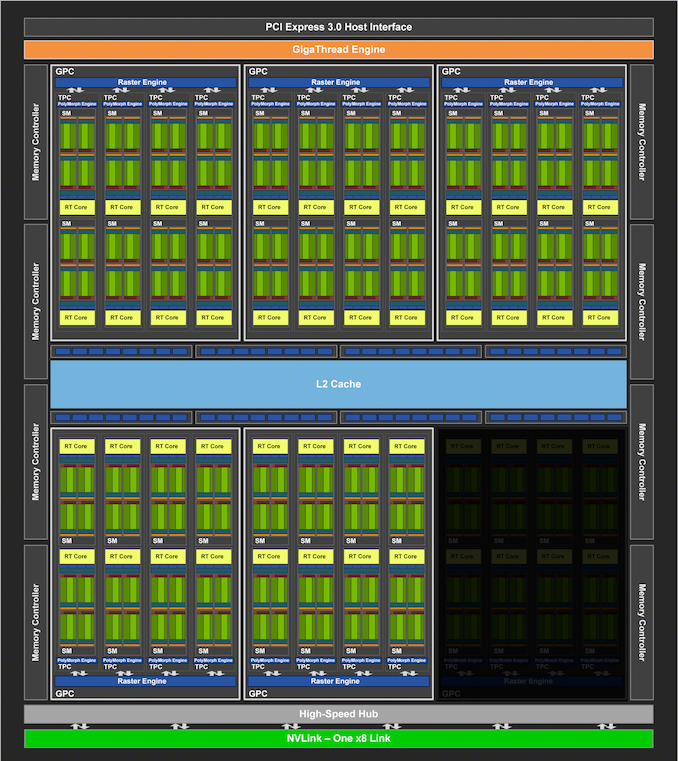
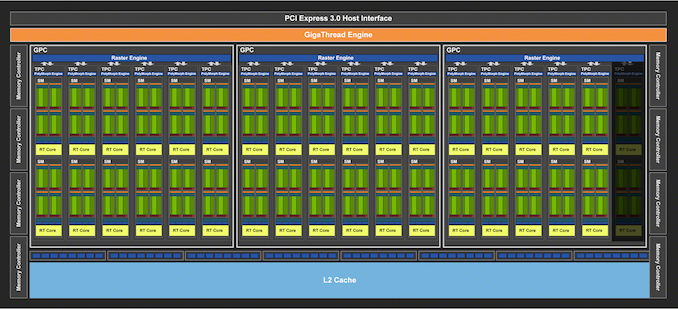
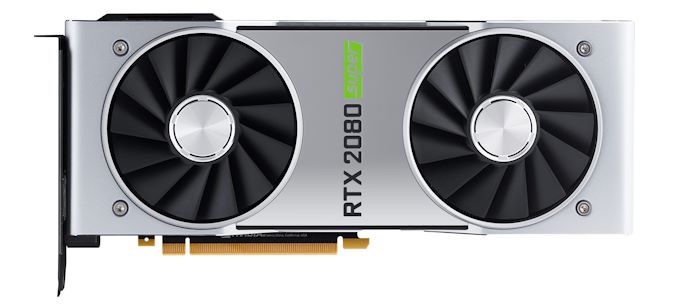
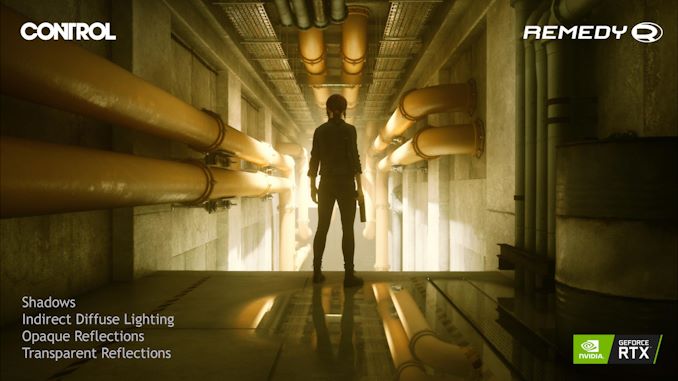








281 Comments
View All Comments
Pino - Tuesday, July 2, 2019 - link
Worst naming ever by their marketing department!maroon1 - Tuesday, July 2, 2019 - link
Who cares about names ?They can even call it Trash. If it delivers good performance then I will buy it
Hifihedgehog - Tuesday, July 2, 2019 - link
Yes. I could not care less as long as they offer killer performance. At long last, they finally offer appreciably more performance per dollar than Pascal. That is a win in my book.zmatt - Tuesday, July 2, 2019 - link
You still have to pay $700 to beat the raw flops of a 1080ti. No deal.Opencg - Tuesday, July 2, 2019 - link
Yeah the 10 series is still the king of value. I think people will find that some of these super cards are not as good as they seem. The 2070 super for example runs less cores at a higher clock to get close to the same performance of a 1080. But the clocks used are basically what every 1080 can do in its sleep when overclocked. Overclocking results on the 2070 super put it only up to the 1080 stock due to the lower headroom available. And many 1080s are clocked 90mhz higher or more by default. The 1080 super will fair even worse having basically the same amount of cores as the 1080.pandemonium - Wednesday, July 3, 2019 - link
While true, I think you guys are overlooking the value that the 2080 and 2080 Ti cards bring: NVLink. It's not the same as SLI. Going forward, this will allow these cards to retain much longer longevity on the market.eek2121 - Wednesday, July 3, 2019 - link
"value" he says. I paid $799 for my 1080ti and quite a few people said THAT was a high price. NVIDIA sure fooled them. I could care less about NVLink. I have very little reason to have more than 1 GPU in my system. The 1080ti more than keeps up at 4K at max details (or close to max details, sometimes I might have to turn AA down depending on the implementation used), and by the time it doesn't, there will be faster cards that do.Opencg - Wednesday, July 3, 2019 - link
the 1080ti will go down in history as one of the longest lived cards ever. since the 2080 ti is not a significant step up especially when you consider price. the 1080ti basically spans two generations of dominancekaesden - Wednesday, July 3, 2019 - link
the 1080ti is the 2500k of video cards.ludicrousByte - Thursday, July 11, 2019 - link
^ This :)